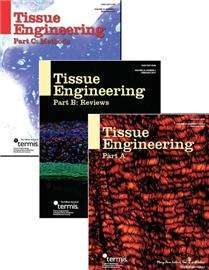Credit: Mary Ann Liebert, Inc., publishers
The use of human hair-derived keratin biomaterials to regenerate skeletal muscle has shown promise in new research that documents significant increases in both new muscle tissue formation and muscle function among mouse models of volumetric muscle loss. Two new studies that compare muscle regeneration following treatment with keratin hydrogels, no repair, or an alternative tissue matrix are published in in Tissue Engineering, Part A.
In "Cell and Growth Factor-Loaded Keratin Hydrogels for Treatment of Volumetric Muscle Loss (VML) in Mouse Model," Hannah Baker, PhD, Juliana Passipieri, PhD, George Christ, PhD, and coauthors from University Maryland (College Park), University of Virginia (Charlottesville), Wake Forest University and KeraNetics, LLC (Winston-Salem, NC), and Miami University (Oxford, OH) report that mice with an area of substantial muscle mass loss that were treated with keratin hydrogels and growth factors had the best recovery of muscle contraction force. Examination of the affected muscle two months after treatment showed that mice with greater recovery of muscle function also had more extensive new muscle.
In a second study, entitled "Keratin Hydrogel Enhances In Vivo Skeletal Muscle Function in a Rat Model of Volumetric Muscle Loss," Passipieri, Baker, Christ, et al. compared the results of treating a substantial muscle injury in rats using keratin hydrogels with or without growth factors or skeletal muscle progenitor cells versus control animals treated with no repair or an alternative tissue matrix. Keratin hydrogel-treated animals recovered up to 90% of the maximum possible muscle function.
More information: H.B. Baker et al, Cell and Growth Factor-Loaded Keratin Hydrogels for Treatment of Volumetric Muscle Loss in a Mouse Model, Tissue Engineering Part A (2017). DOI: 10.1089/ten.tea.2016.0457
J.A. Passipieri et al. Keratin Hydrogel EnhancesSkeletal Muscle Function in a Rat Model of Volumetric Muscle Loss, Tissue Engineering Part A (2017). DOI: 10.1089/ten.tea.2016.0458
Provided by Mary Ann Liebert, Inc




















